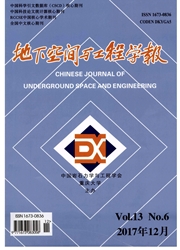

 中文摘要:
中文摘要:
以唐家湾东古滑坡为例,基于地质详勘资料,采用滑坡结构剖析、地形恢复反演、历史地震资料分析、动力有限元计算验证等手段,通过定性分析与定量计算相结合对该古滑坡成因进行详细阐述和论证;然后,结合影响斜坡稳定的各相关因素,对其现代复活机制和稳定性状态进行系统分析。结果表明:古地震是古滑坡产生的直接原因,其当前复活除了与固有地质背景和降雨条件有关外,人类工程活动(包括城镇建设和大坝蓄水)是最主要的直接诱发因素。
 英文摘要:
英文摘要:
Based on the geologic exploration data, the cause of the East Tangjiawan ancient landslide is surmised and elaborated in detail by qualitative analysis methods, including slope structure dissection, topography restoration and inversion, paleoearthquake record analysis and quantitative analysis, i.e. dynamic FEM computation and verification. And then, combining the possible influence factors comprehensive analysis, the modem reviving mechanism and the present stability evaluation is systematically analysed finally. The results show that paleoearthquake is the direct cause of the ancient landslide and in addition to the inherent geology backgrounds and the rainfall condition, the human engineering activities ( include town construction and water storage of dam } is the uppermost induction factor for the reviving of the landslide.
 同期刊论文项目
同期刊论文项目
 同项目期刊论文
同项目期刊论文
 期刊信息
期刊信息
